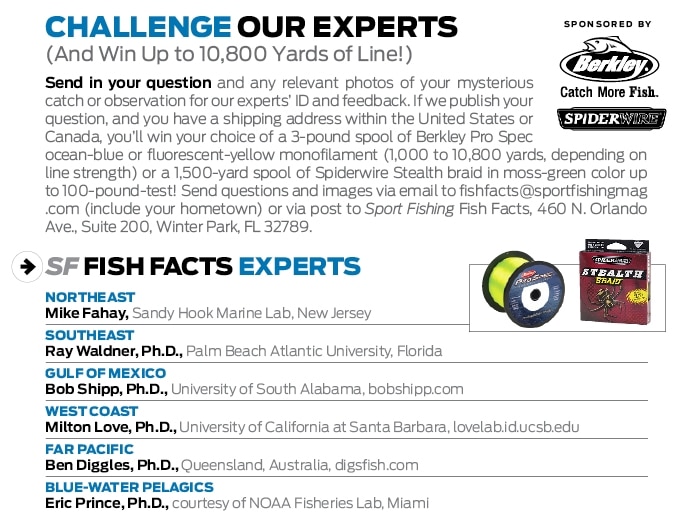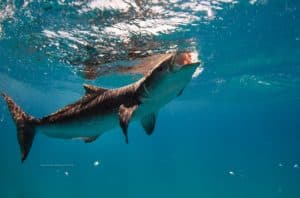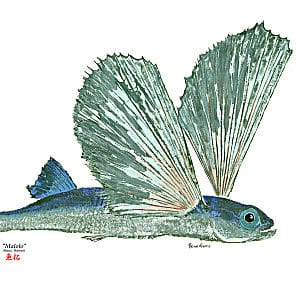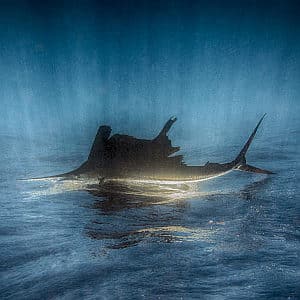In each issue of Sport Fishing magazine, a panel of five international expert ichthyologists identifies unusual and often amazing fishes in photos submitted by readers. Below you’ll find the I.D. and information for a few interesting catches from far and wide.
SIMPLY GORGEOUS
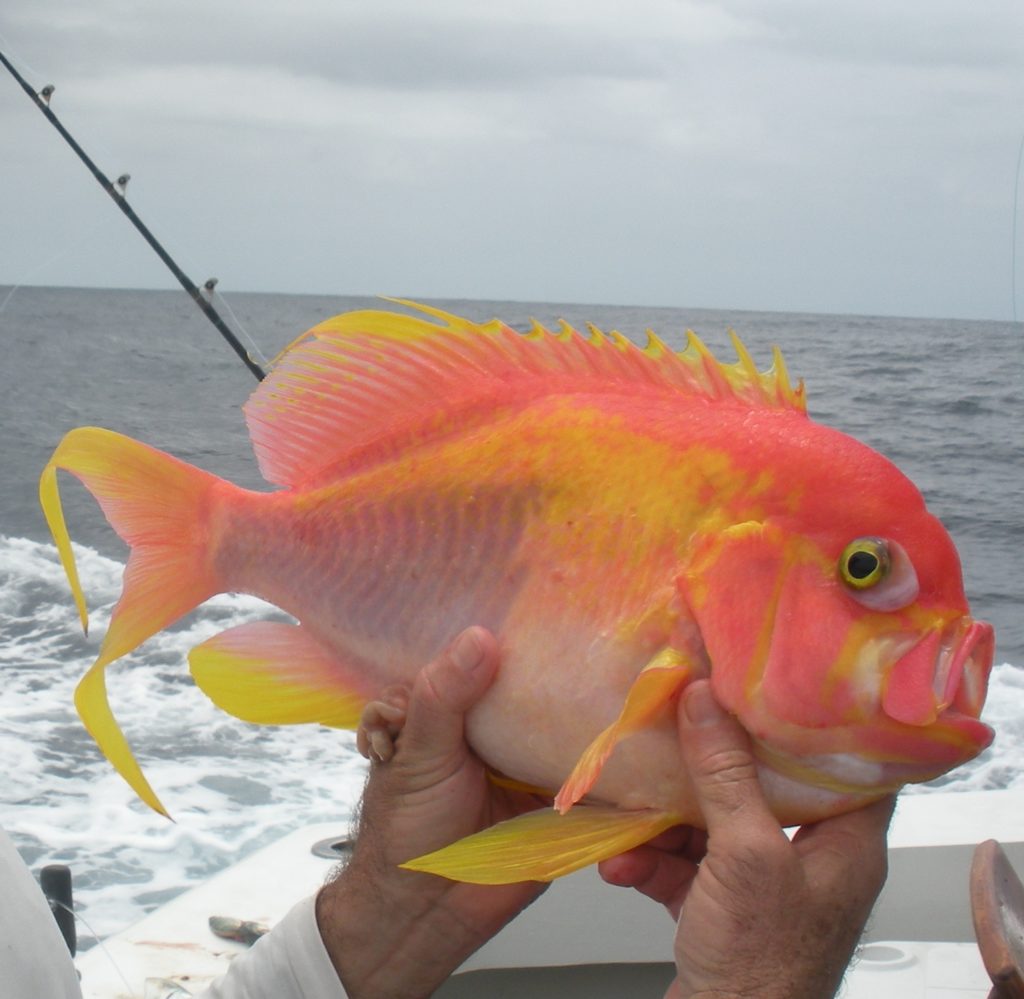
Gorgeous Swallowtail
Stefan Houareau
Hudson, Wisconsin Stefan Houareau
ANSWER: Stefan, your dad encountered the rare and aptly named gorgeous swallowtail, Meganthias natalensis. These fish are actually close relatives of groupers, and are placed by taxonomists in the subfamily Anthiinae, a group of relatively small, colorful fishes known as fairy basslets, within the family Serranidae. Gorgeous swallowtails are the largest of the fairy basslets, growing to more than 16 inches long (to the tail fork, so excluding the spectacularly long, slender lobes of the caudal fin). This species is known to occur only in the Indian Ocean, along coasts of South Africa, Mozambique, Kenya, the Seychelles and Reunion Island, and as far east as the Andaman Sea near Thailand. They frequent deep reefs, usually between depths of 250 to 600 feet, so compared to other captures, this fish was taken in relatively shallow water. Like other serranids, gorgeous swallowtails are a predatory species, feeding mainly on other fishes. Given that some skippers in the Seychelles report seeing only one or two gorgeous swallowtails throughout their whole career, you and your dad certainly had luck on your side that day.
— Ben Diggles
CAN A TIGER CHANGE ITS SPOTS?
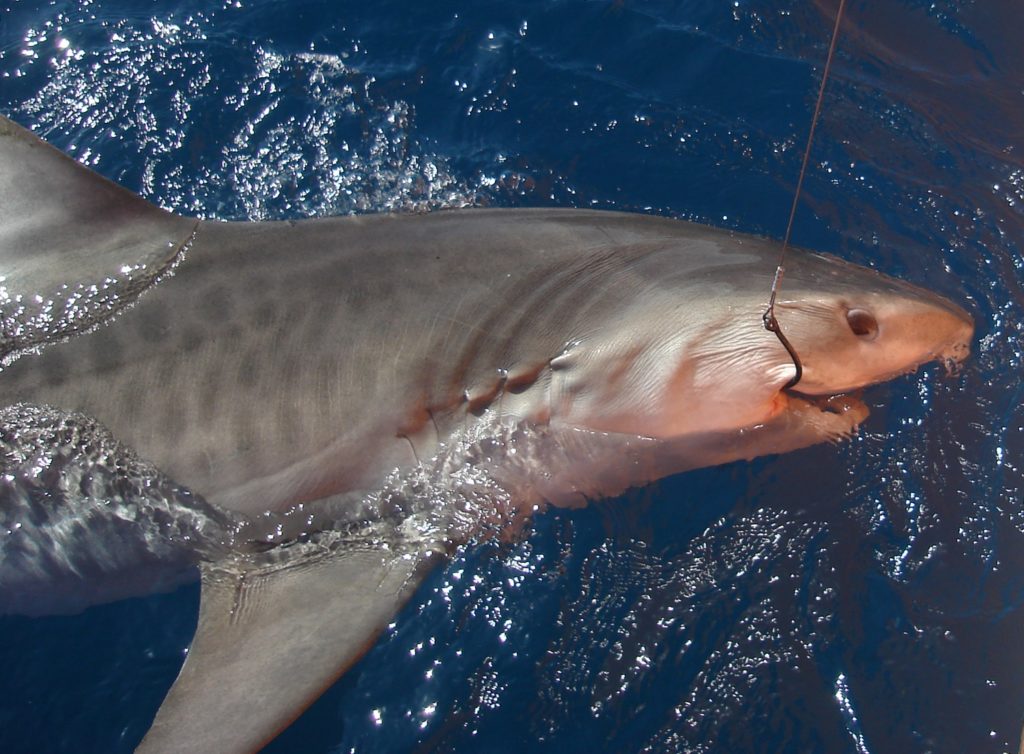
Tiger Shark
Kyle Stratton
Thunder Bay, Ontario, Canada Kyle Stratton
ANSWER: Fishes may undergo fairly rapid color changes that involve the distribution of pigment granules in their chromatophores, or pigment-containing cells; these are termed physiological color changes. They may also display slow, long-term color changes that involve the amount and kind of pigment granules and chromatophores present; these are termed morphological color changes. The kind of color change you mention would be morphological, and changes of this sort are controlled at least partially by changes in hormone levels.
In the case of tiger sharks, Galeocerdo cuvier, young fish typically have the spotted pattern you describe. When the sharks reach some 5 to 7 feet in length, the spots fuse together to form stripes that fade as the sharks age. As in all animals, however, some degree of individual variation occurs, and the color changes may occur in somewhat smaller/younger or larger/older individuals. Tiger sharks normally reach sexual maturity at lengths between 7½ and 11½ feet. In a Hawaiian study of tiger shark reproductive biology, Nicholas Whitney and Gerald Crow (2007) found that males average approximately 9½ feet when they reach sexual maturity, while females average 11 feet or slightly larger, so the spots-to-stripes color change occurs prior to tiger sharks becoming reproductively active.
— Ray Waldner
BAND FROM THE SAND
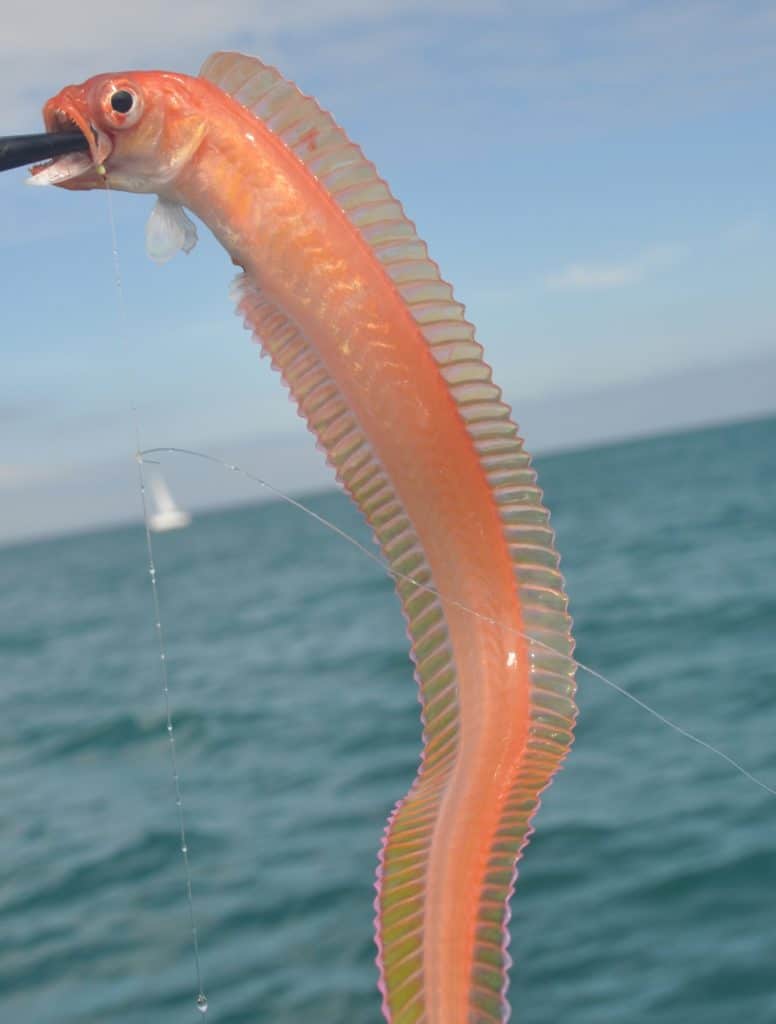
Red Bandfish
Dave Lewis
Wales, United Kingdom Dave Lewis
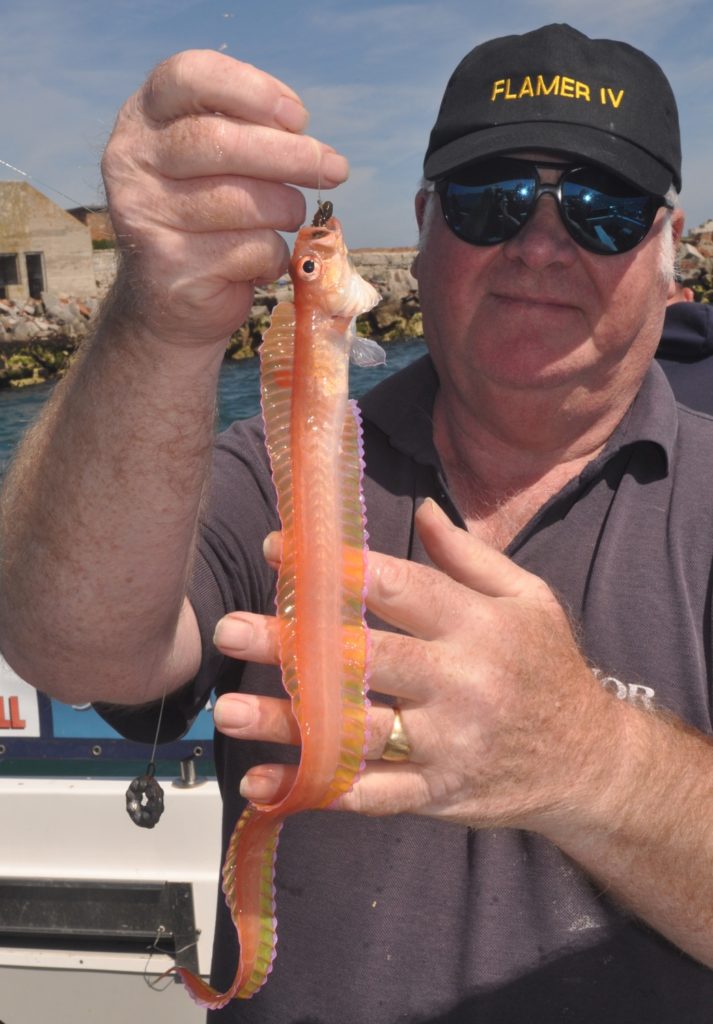
ANSWER: It’s a red bandfish, genus Cepola, in the family Cepolidae. Because of its relatively small eye, compared to others in its genus, it’s most likely C. rubescens. For such a spectacular-looking fish, I found very little information on it in the ichthyology literature, even regarding its higher-level classification. Turns out it’s in the order Perciformes, suborder Percoidei — a notorious dumping ground for taxa we can’t place anywhere else.
This is a burrowing fish, living in vertical burrows dug into sand or mud habitats, sometimes emerging to swim in midwater. It occurs as deep as 600 feet, where it feeds mostly on planktonic invertebrates. It can attain lengths of 27 to 28 inches, but the ones shown in the photo are closer to the maximum size usually caught.
As for importance or edibility, several sources suggest it is much sought after by fishermen in the U.K. I found several references to using bandfish in chowders. Wikipedia says: “The oldest recipe by a named author involves the preparation of a bandfish. The original recipe book, by Mithaecus, is now lost, but the recipe itself survives thanks to being quoted in The Deipnosophistae.” I was able to track down that ancient recipe. Here it is: Gut, discard the head, rinse, slice; add cheese and oil.
— Mike Fahay
WHAT A STUD
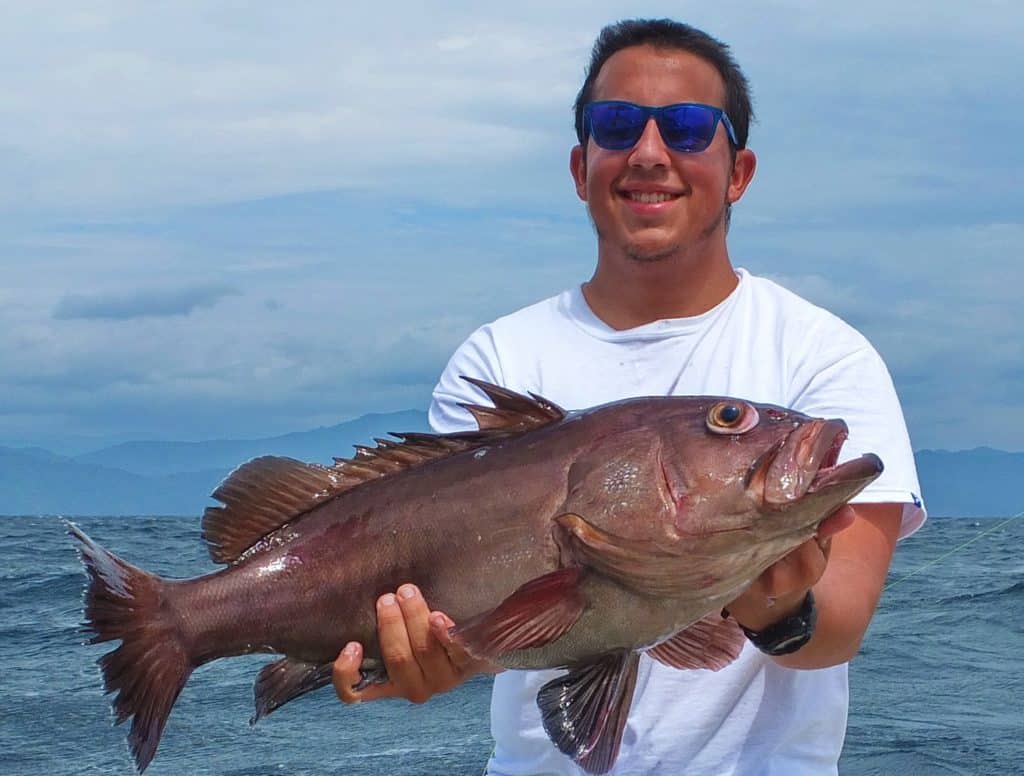
Star-Studded Grouper
Albert Battoo
Fishing Director, Tropic Star Lodge
Piñas Bay, Panama Gustavo Arvelo
ANSWER: I’ll be honest with you, Albert: Anytime someone sends me a picture of a grouper and asks, “Whazzat?” I just want to go home, put a cold compress on my head, and have a bit of a lie-down. That’s because identifying groupers from photographs can be so difficult. Not only can these fish change color and pattern (and sex) as they mature, but they can also change appearance with season, time of day, and just because they damn well feel like it. The fish you’re wondering about is a good example.
Without having that fish in hand, I could identify it as any of several different species. Fortunately, my colleagues experts Ross Robertson and Matt Craig both agree that this is the star-studded grouper, Hyporthodus niphobles. Star-studdeds are found from central California to Peru. (Formerly abundant from southern Baja California down into the tropics, too much commercial fishing has substantially lowered their numbers.) They reach about 4 feet long; you can find little ones in tide pools and big ones in rocky areas down to depths of about 1,500 feet, where they eat anything that is not bolted to the bottom.
So, you might ask, where are the stars? That question illustrates one of the problems with grouper identification: Juvenile star-studdeds are dark fish covered with white spots. As the fish mature, however, they either lose the spots entirely (like your fish) or retain only a series of light blotches.
— Milton Love
FLAT FILE
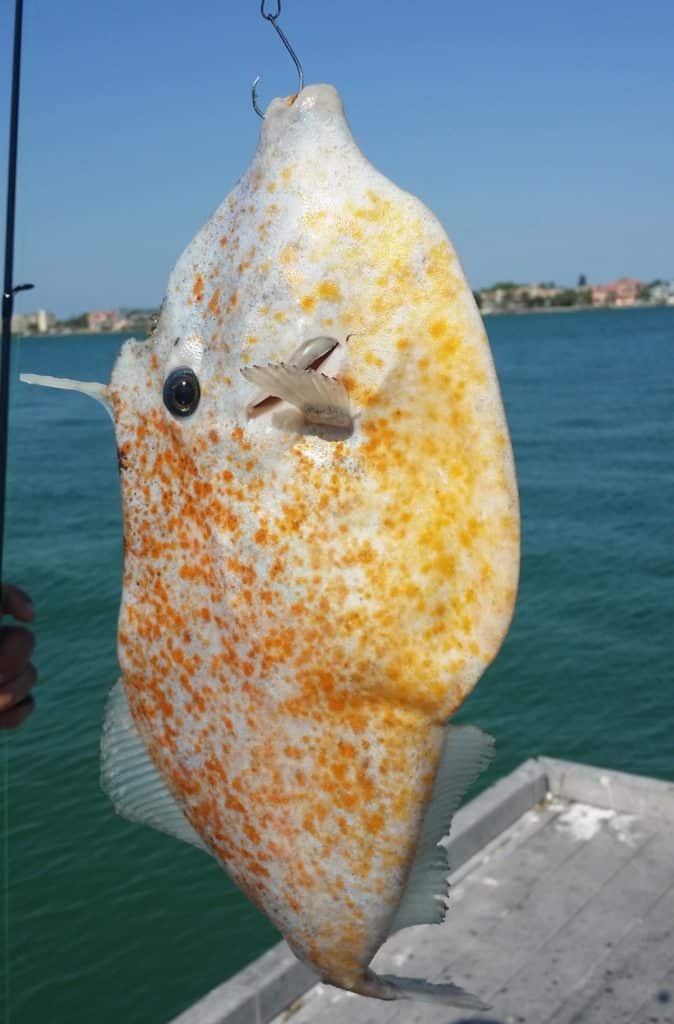
Filefish
Jay Mardis
Largo, Florida Jay Mardis
ANSWER: Jay, you were close. Your catch is one of the filefishes, very closely related to and sometimes considered in the same family as the triggerfishes. The genus is Aluterus, a group of four species (scrawled, unicorn, orange and dotterel) found circumtropically. But I’ve never seen one with the pigmentation yours shows. Usually the color patterns are pretty diagnostic, but not in this case.
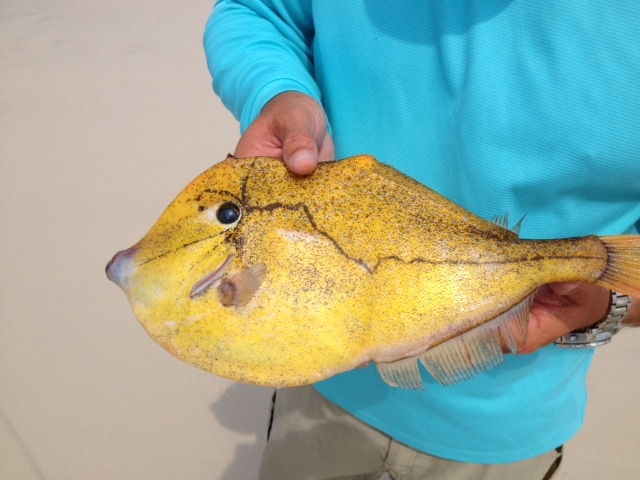
To make matters even more fascinating, I recently received a photo of another member of this genus, also with an aberrant color pattern, as you can see in the image above. After a lot of digging, I am 95 percent certain that this second fish is an orange filefish, Aluterus schoepfii. As for yours, I conclude with about 75 percent certainty that it’s also an orange filefish. If so, it shows dramatic differences in the color patterns of this species.
This whole clan is fascinating. Most filefishes are quite small, topping out at less than a foot. But species of Aluterus are the largest filefishes, sometimes reaching more than 2 feet in length. They’re extremely thin, but like their cousins the triggerfishes, they are quite good table fare. Very weak swimmers, filefish prefer to drift in the company of floating debris or sargassum. They feed by drifting close to their prey, and then, with a lightning strike, complete their meal.
— Bob Shipp
FROM THE FISH FACTS ARCHIVES
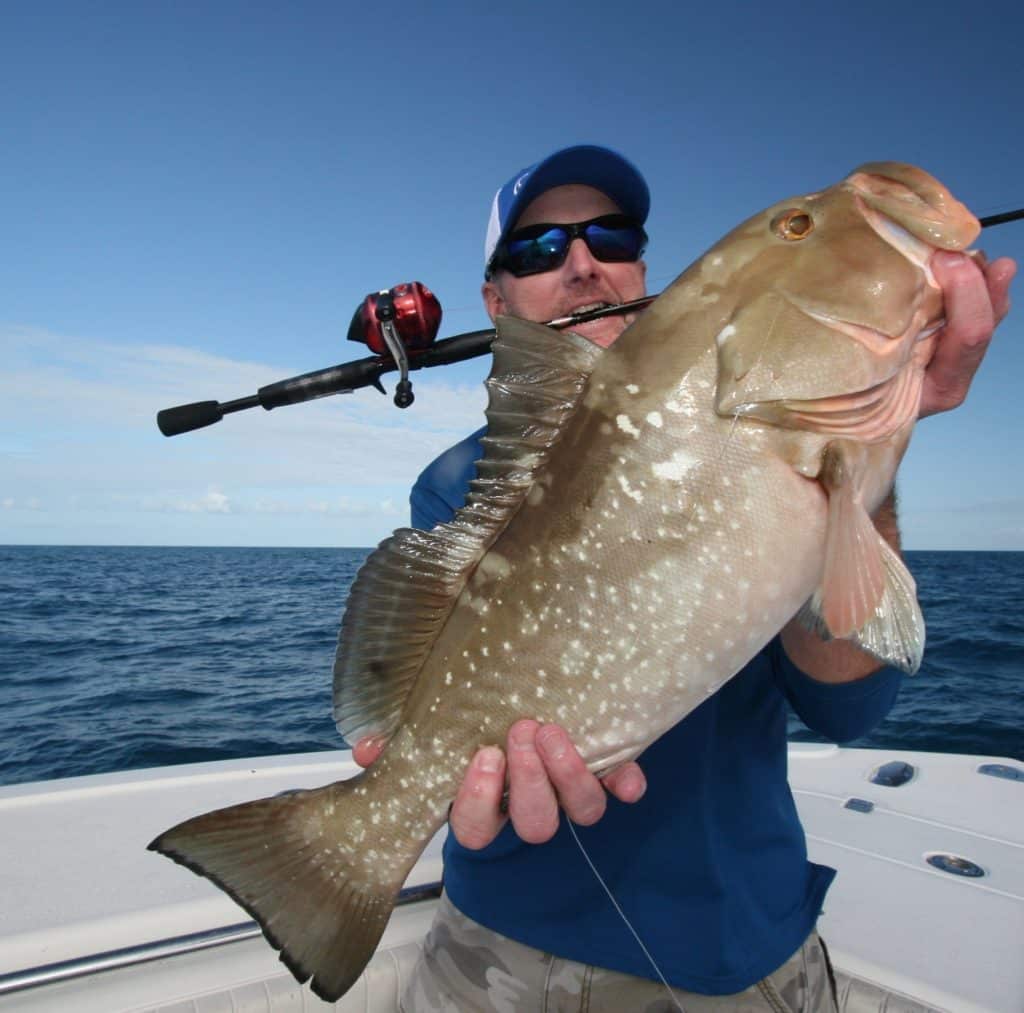
Angler rely heavily on red grouper, widely abundant and available to bottomfishers around Florida. Reds tend to prefer hard bottom, away from reefs, making them more suitable targets with light tackle than are many other groupers. The all-tackle record, weighing 42 pounds, 4 ounces, was caught off St. Augustine, Florida, in 1997.
